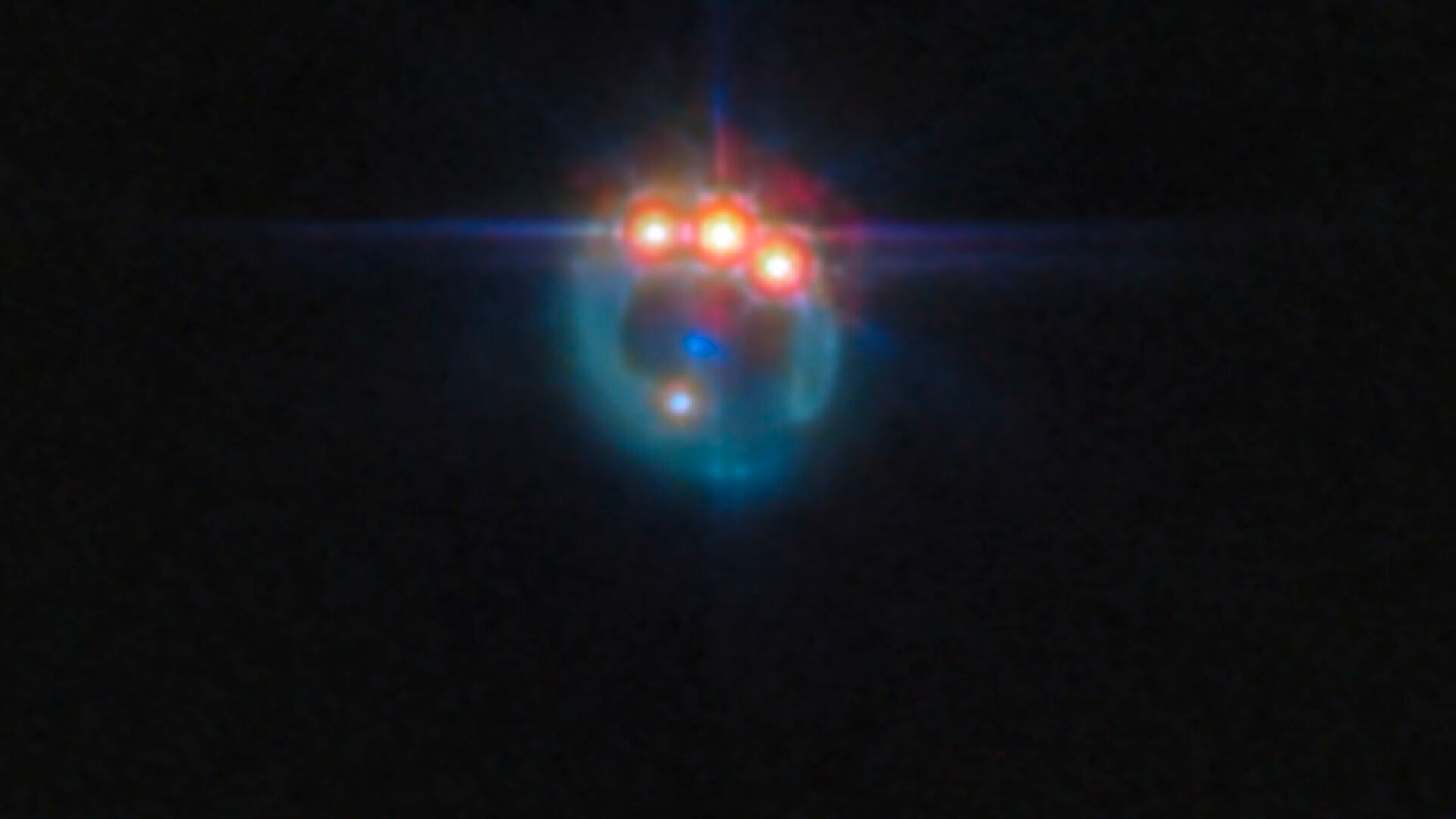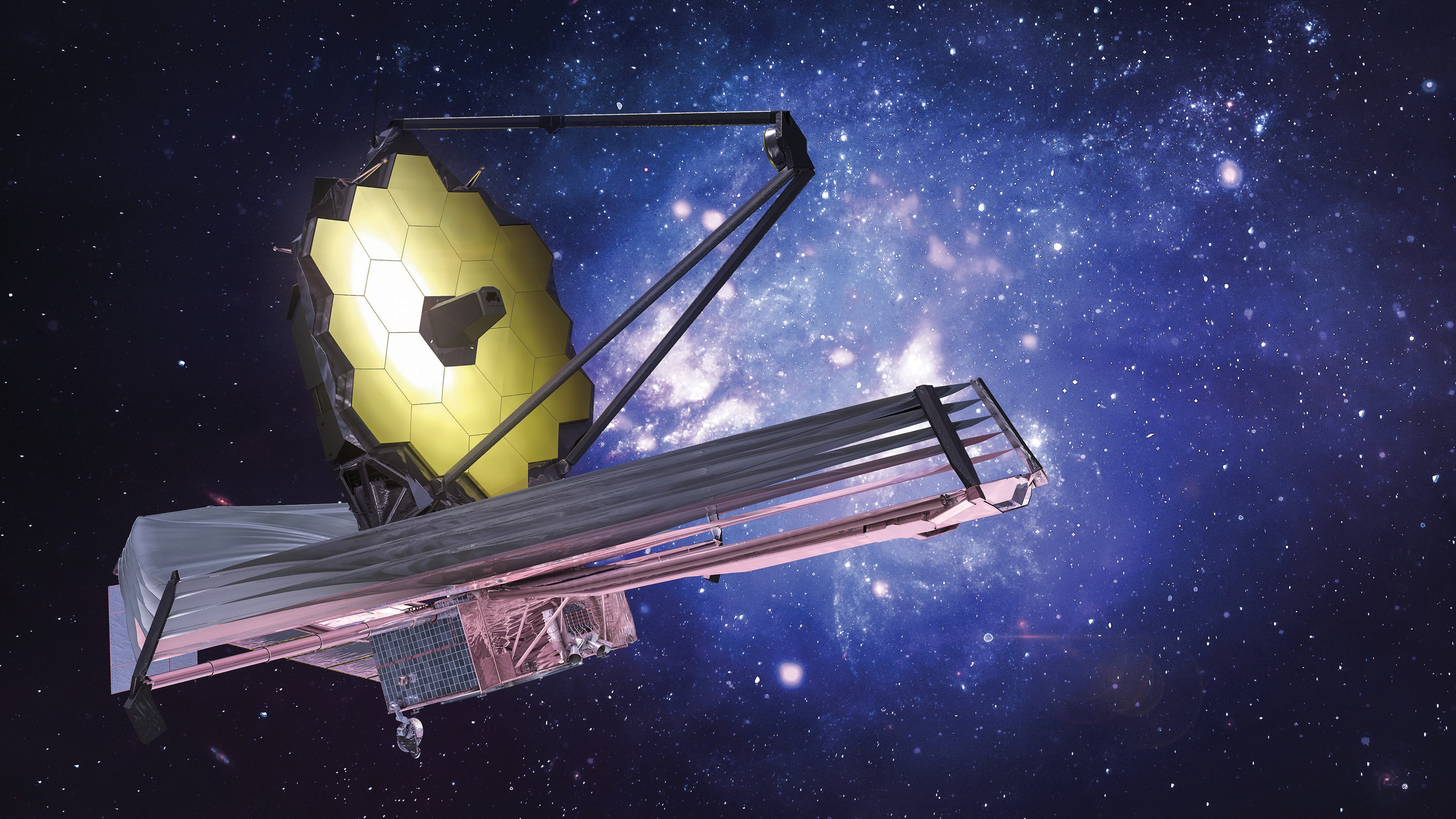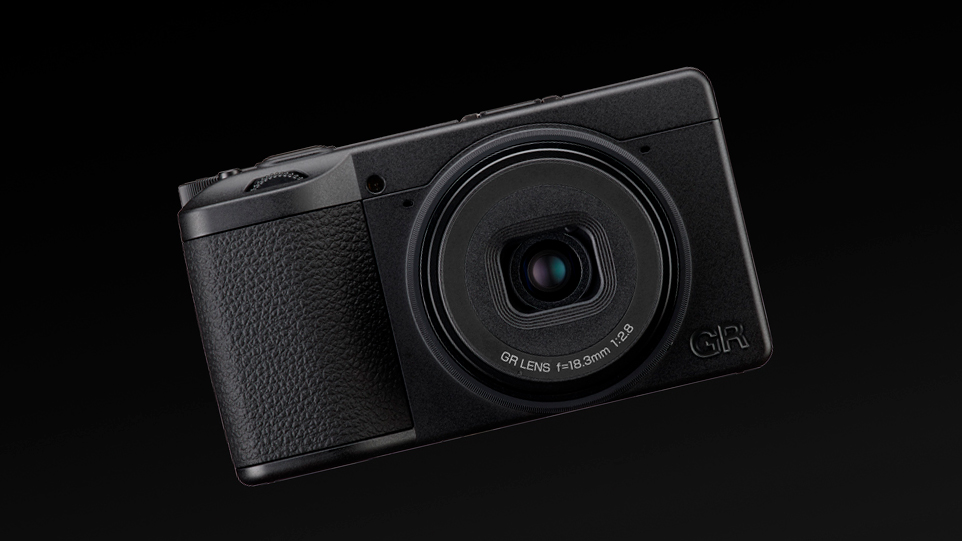James Webb Space Telescope photographs jeweled ring in the cosmos in one of its best discoveries to date
Did you know gravity can create lenses, and Einstein predicted it? Here's one the JSWT saw!

The undisputed king of cosmic imaging, the James Webb Space Telescope, has captured a sparkling bejewelled ruby ring in the depths of space.
With its powerful infrared sensors, the James Webb shot the beautiful and unusual scene of a quasar, the blazing center of a galaxy – powered by a gas and dust – falling into a supermassive black hole. It is known as RX J1131 – 1231, and lies about six million light years from Earth.
This new image was taken using the James Webb’s Mid-Infrared Instrument (MIRI) as part of an ongoing larger study of dark matter, and its distribution in the universe.
What’s rare about this cosmic scene, is that the quasar’s light has been transformed into a stunning ‘Einstein ring’, due to a celestial phenomenon called gravitational lensing.
According to the European Space Agency (ESA), “It is considered one of the best lensed quasars discovered to date, as the foreground galaxy smears the image of the background quasar into a bright arc and creates four images of the object.”
First predicted by Einstein, gravitational lensing occurs when a large amount of matter, such as a cluster of galaxies, creates its own gravitational field that distorts and magnifies the light from distant galaxies that are behind it, but in the same line of sight.
The lensing effect serves as a natural telescope with a flash, magnifying distant astronomical objects and offering a rare glimpse into secrets that usually are too distant to observe.
The best camera deals, reviews, product advice, and unmissable photography news, direct to your inbox!

Measurements of the X-ray emissions from quasars can help explain how fast the center of the black hole is spinning, giving scientists important clues about how black holes grow and morph over time.
"If a black hole grows primarily from collisions and mergers between galaxies, it should accumulate material in a stable disc, and the steady supply of new material from the disc should lead to a rapidly spinning black hole," ESA officials said in the statement. "On the other hand, if the black hole grew through many small accretion episodes, it would accumulate material from random directions. Observations have indicated that the black hole in this particular quasar is spinning at over half the speed of light, which suggests that this black hole has grown via mergers, rather than pulling material in from different directions."

After graduating from Cardiff University with an Master's Degree in Journalism, Media and Communications Leonie developed a love of photography after taking a year out to travel around the world.
While visiting countries such as Mongolia, Kazakhstan, Bangladesh and Ukraine with her trusty Nikon, Leonie learned how to capture the beauty of these inspiring places, and her photography has accompanied her various freelance travel features.
As well as travel photography Leonie also has a passion for wildlife photography both in the UK and abroad.
